For my birthday a few years ago, Simon bought me a subscription to the weekend Financial Times, obvs not because I am obsessed with share prices and global business, but because it has the best arts, culture, and review sections and magazines. The subscription keeps getting renewed, and every Saturday, just as I did when I was little and I walked up the road to the newsagent’s to buy Princess Tina (Diana having already been delivered and read), I get the pink FT. I lie. Simon does.
[‘Woman Reading’ (1880-82) by Manet]
But last Saturday I said I’d pick it up as I was getting an early train to London. Alas, there were no newspapers at all in the Sainsbury’s opposite the station, WH Smith on the platform was shut, and on the way home I still couldn’t find a copy, not even at the big and very busy Liverpool Street Station. Which has made me think once again just how precarious the business of selling printed newspapers has become and how, for someone who has had a life-long newspaper habit, the prospect of losing them altogether is alarming.
[‘Resting Woman’ (1936-39) by James HP Neal]
My Mum was a great newspaper-reader and we had The Manchester Guardian - as it was known up north long after it had moved to London - delivered in the morning and The Manchester Evening News in, well, the evening. There was also the occasional copy of The Stockport Express or The Stockport Advertiser if someone we knew was in it. Having so many good local rags was not unusual then, and there were similarly excellent and important local newspapers all over the country being delivered by an army of paper boys and paper girls (including Simon, who delivered The Grimsby Evening Telegraph).
I had my proper paper epiphany when I was about 14 and a dedicated diary-writer. We had The Sunday Times at home and I loved the Review, then in a whopping broadsheet format. One Sunday there was a full-page article by Tina Brown about the joys of keeping a diary, and it was the first time I’d ever read an article which appeared to have been written just for me. It convinced me of the brilliance of good journalism and turned me into a newspaper junkie. I then started going into the school library every day before the bell to read the obituaries in The Times - and I still read the obits every day in The Guardian because what people do with their lives is an endlessly fascinating subject).
I also had access to newspapers I wouldn’t otherwise have got hold of, courtesy of my job in a fish and chip shop. We had a thick stack of sheets for wrapping and while we waited for the fish to fry, I’d have to tear up more newspapers for the pile so could quickly set aside anything that caught my eye. Sometimes I stopped wrapping mid-way if I saw a good headline; I would unwrap the chips and rewrap them in boring business news and uninteresting scandal. And off I would go after my shift, my pockets stuffed with articles, a one-woman ‘media monitoring agency’ as clipping services are now known.
Newspapers have been a part of daily life ever since. I could make The Sunday Times last for days at university, and on Sundays when we lived in Germany we drove to Frankfurt airport or took the train to the Hauptbahnhof to get English papers, and all visitors were asked to bring a big, fat wadge with them.
[Victoria Station, Manchester, c1930]
So the shrinking range of newspapers in railway stations is something to be worried about. WH Smith cornered the market early, 233 years ago (there’s a nice article about it here - but just yesterday there were headlines about a possible sale of the whole business) with their incredibly packed and alluring stands. Stockport station used to have a brilliant one on the south-bound platform and I loved the combination of newspapers + train journey + destination = adventure and escape. I looked recently, but the old-style stall with its supply of hours of reading matter has gone and now there’s just a sad, generic WH Smith which is more interested in selling cards and crisps. (For more railway reading I recommend Simon Bradley’s books and Andrew Martin’s Substack Reading on Trains.)
[Marylebone Station, 1899, with flowers and newspapers]
I also had a look round Marylebone Station (1899) a couple of weeks ago. It’s my favourite London terminus, partly because it’s relatively small-scale and mostly unchanged, partly because John Betjeman was so keen on it and said it resembled “a public library from Nottingham which has unexpectedly found itself in London”,
and partly (big part) because all the train scenes in A Hard Day’s Night were filmed here, with newspapers - and commuters, that lost breed of broadsheet-reader - featuring strongly.
[Ringo Starr, Astrid Kirchherr and John Lennon during the filming of ‘A Hard Day's Night’, 1964]
All the Beatles were great newspaper readers - and why not, when you are the headlines -
[Oct 1962, Forthlin Road, photo by Mike McCartney]
but John Lennon took it to another level. His lifelong love of newspapers - from the early days of Mersey Beat to the enormously thick and heavy New York Times of his later years - has been well documented by others and by himself - I read the news today, oh boy…
I feel I am a kindred spirit. I still love a printed newspaper with word puzzles which require a pencil, the way you can’t cheat on the crossword and have to wait till the next day for the solution, the serendipity of reading, like browsing in bookshop or library, and the juxtaposition and sequences of articles which you may never come across online. And there’s nothing like sitting in a cafe with a newspaper, feeling like an Existentialist in Les Deux Magots in Paris, or Lenin in the Odeon in Zurich, or Freud in the Cafe Landtmann inVienna. Many European cafes still have copies of the local paper for customers to read, even if it is only the sports rag, and my heart leaps every time I see a tall rack of newspapers or a line of them on old-fashioned long wooden holders - no matter the language.
The weekend is still the most special newspaper time and I look forward to spreading out the Saturday FT on the kitchen table next to a pot of coffee and a plate of croissants, and just luxuriating in the pleasure of turning pages manually and choosing what to read instead of having “suggestions” made by and algorithm. Then I can fold it, recycle it, keep it, or make a little pile of cuttings/tearings (I haven’t lost the habit).
[‘Violin and Pipe’ (1913) by Georges Braque]
Newspapers are not just for reading, either.
[‘Flowers on a Chair’ (1950s) by Dod Procter]
I use them, and my stack of newsprint, for wrapping Christmas cake tins, books, loaves of bread, bunches of flowers, and for covering surfaces while I make a mess when printing or doing cyanotypes. They are also useful for lining hamster and budgie cages, for papier mâché, for making paper boats and aeroplanes and printers’ hats, and for collages, Picasso- and Braque-style.
[Andy Warhol at The Factory, 1979]
They provided source material and some of the most shocking images for Warhol’s screen prints which created “haunting psychological portrait of American popular culture by focusing on its morbid fascination with violence and tragedy”,
and Bob Dylan hoovered up newspapers (here in 1964), distilling the news into of-the-moment yet timeless lyrics and music. (Side-note: A Complete Unknown is excellent, the music is superb, T Chalamet nails it, as they say.)
By coincidence, last Saturday when I was looking for the FT I was on my way to a very enjoyable letterpress workshop where we talked about and worked/played with wood and metal type, headlines, text, setting, ink, and presses. It’s a miracle that any type at all was saved from being chucked when printing went digital; being in a studio surrounded by drawers and cases of typographical history is very special, and it’s amazing to think what can be done with just twenty-six letters, ten numbers, and some punctuation marks .
I’m not being all nostalgic or saying we need to go back to hot metal and screwball/scary newsrooms - such a rich subject for Hollywood - because, thank goodness, we do still have printed papers (the issues surrounding many of their views, owners, influence and content, and the demise of local papers are another subject altogether). But when a top quality paper is hard to find on a Saturday morning, it would seem that this news story isn’t going to end well.
Happy Sunday!




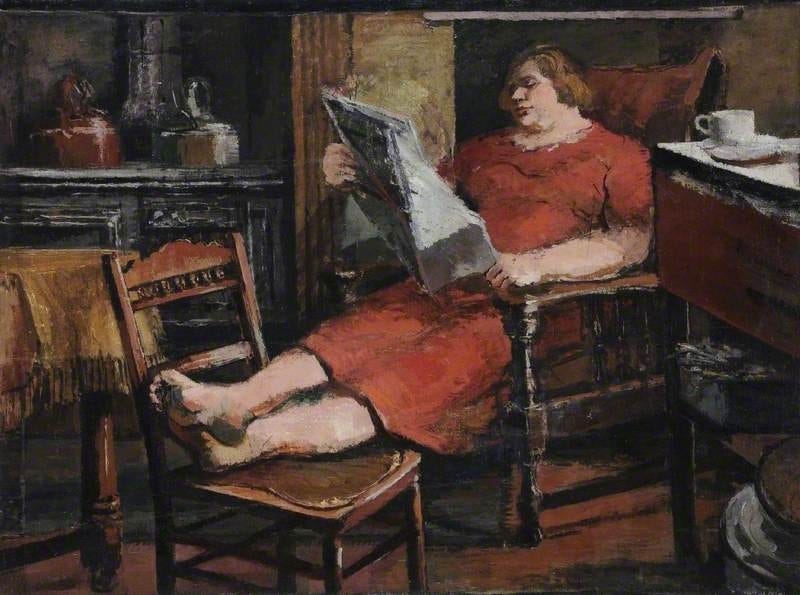
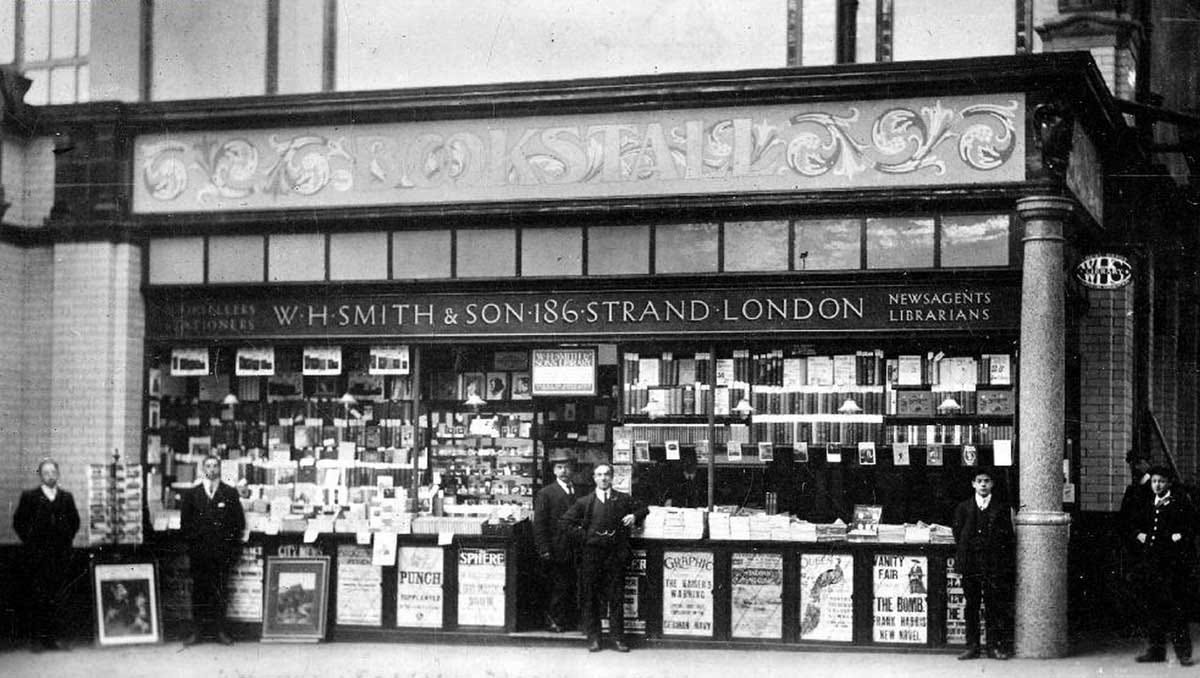
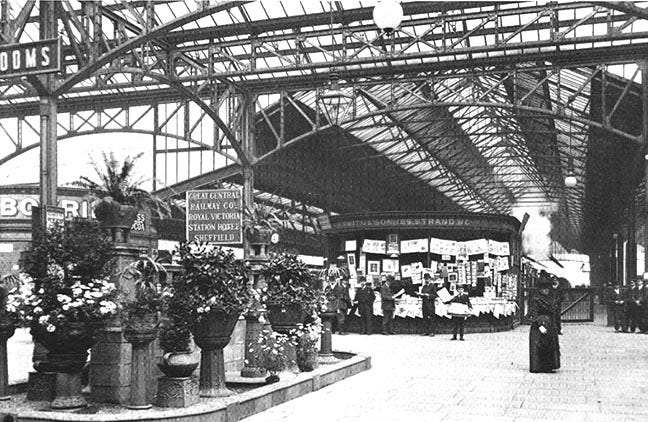

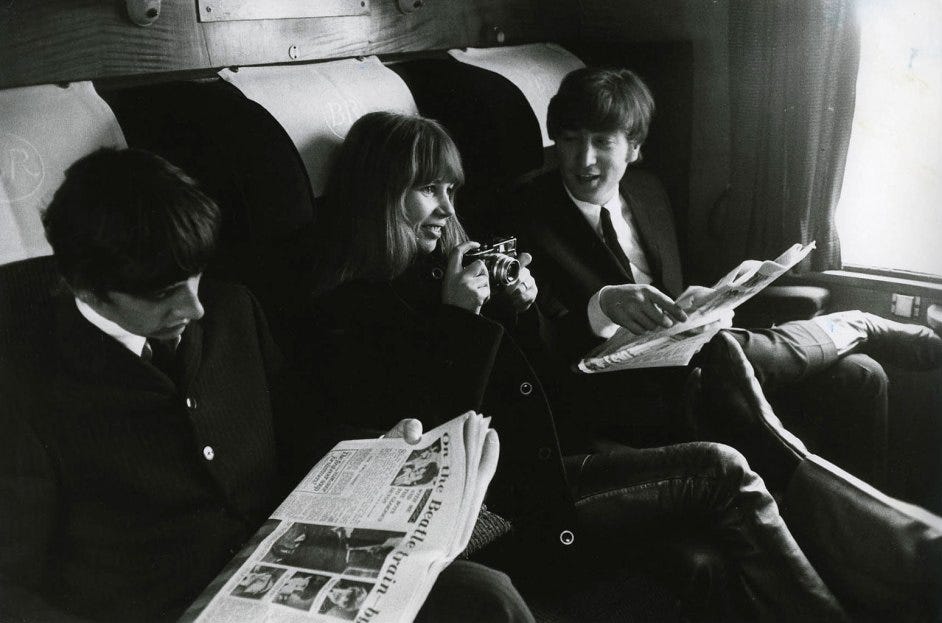


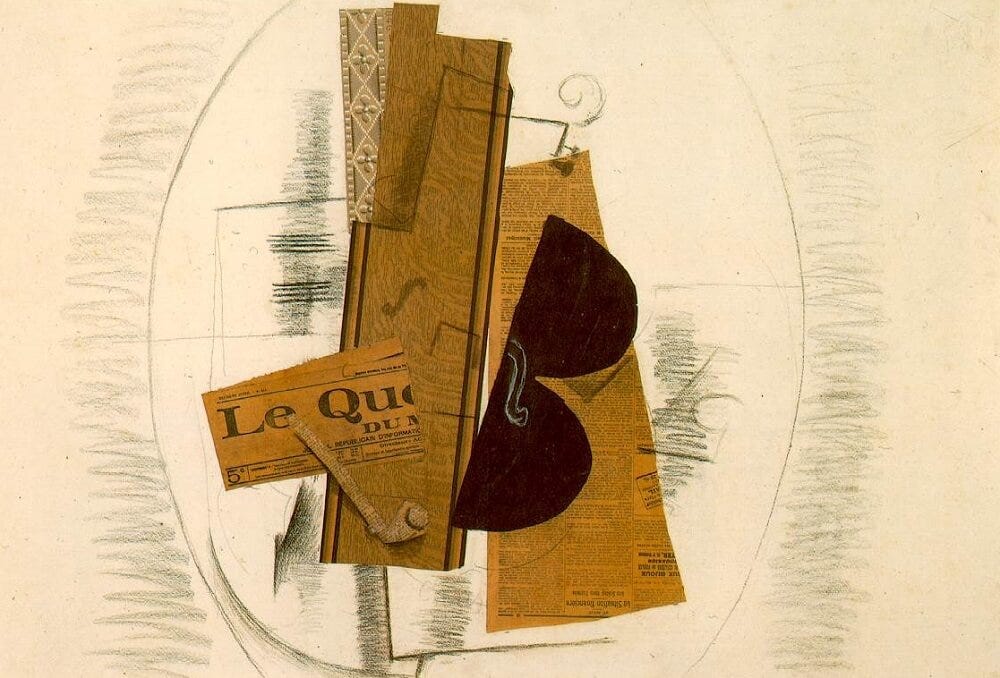
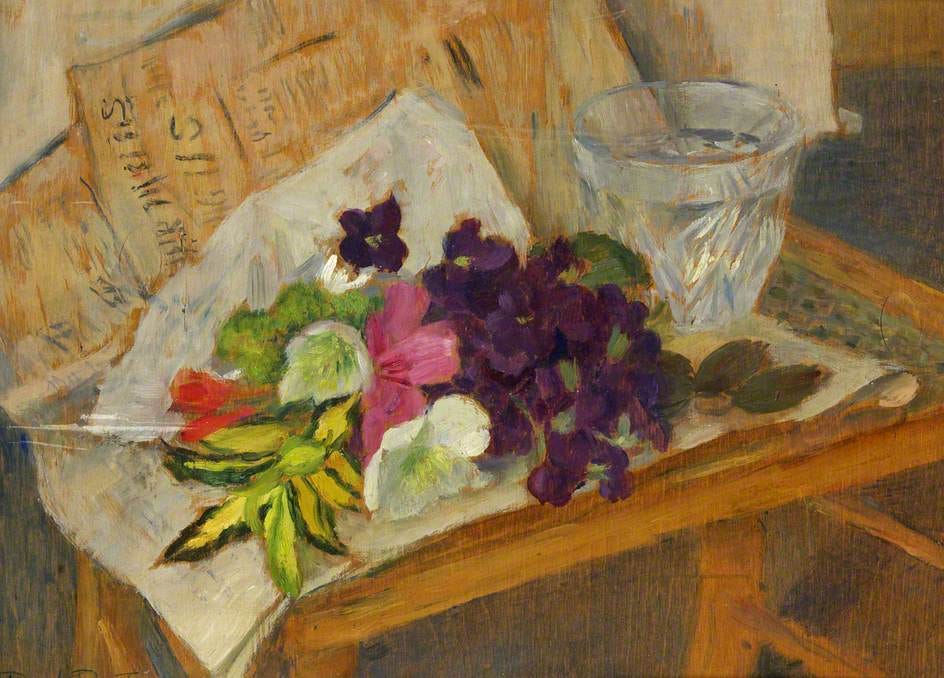
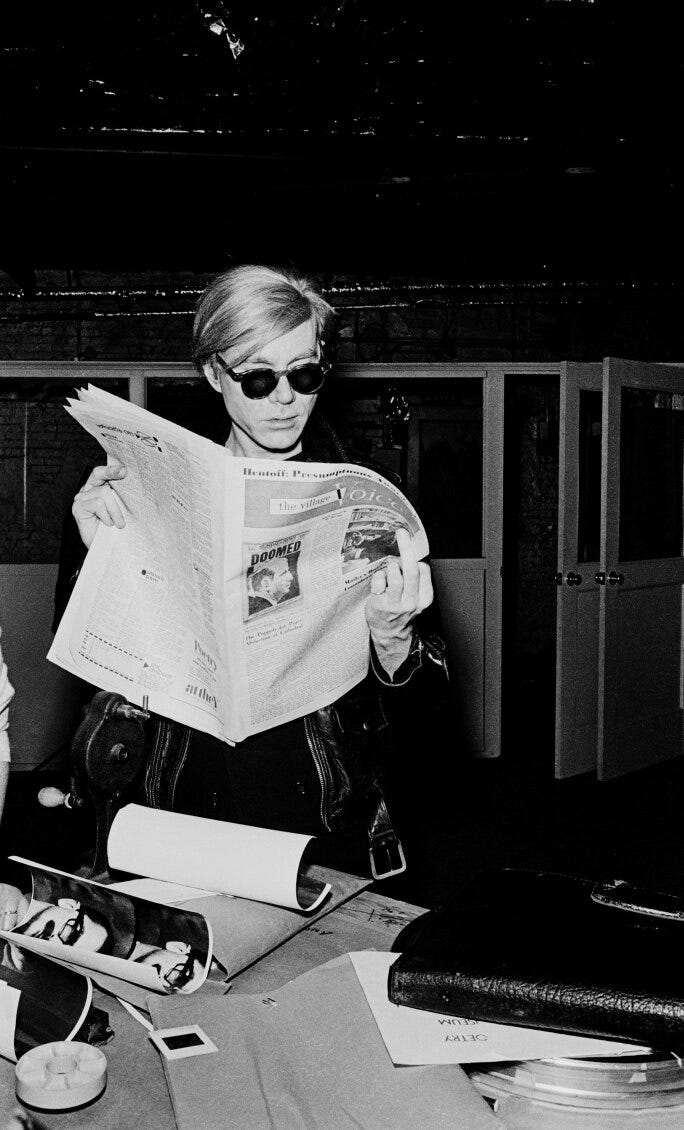

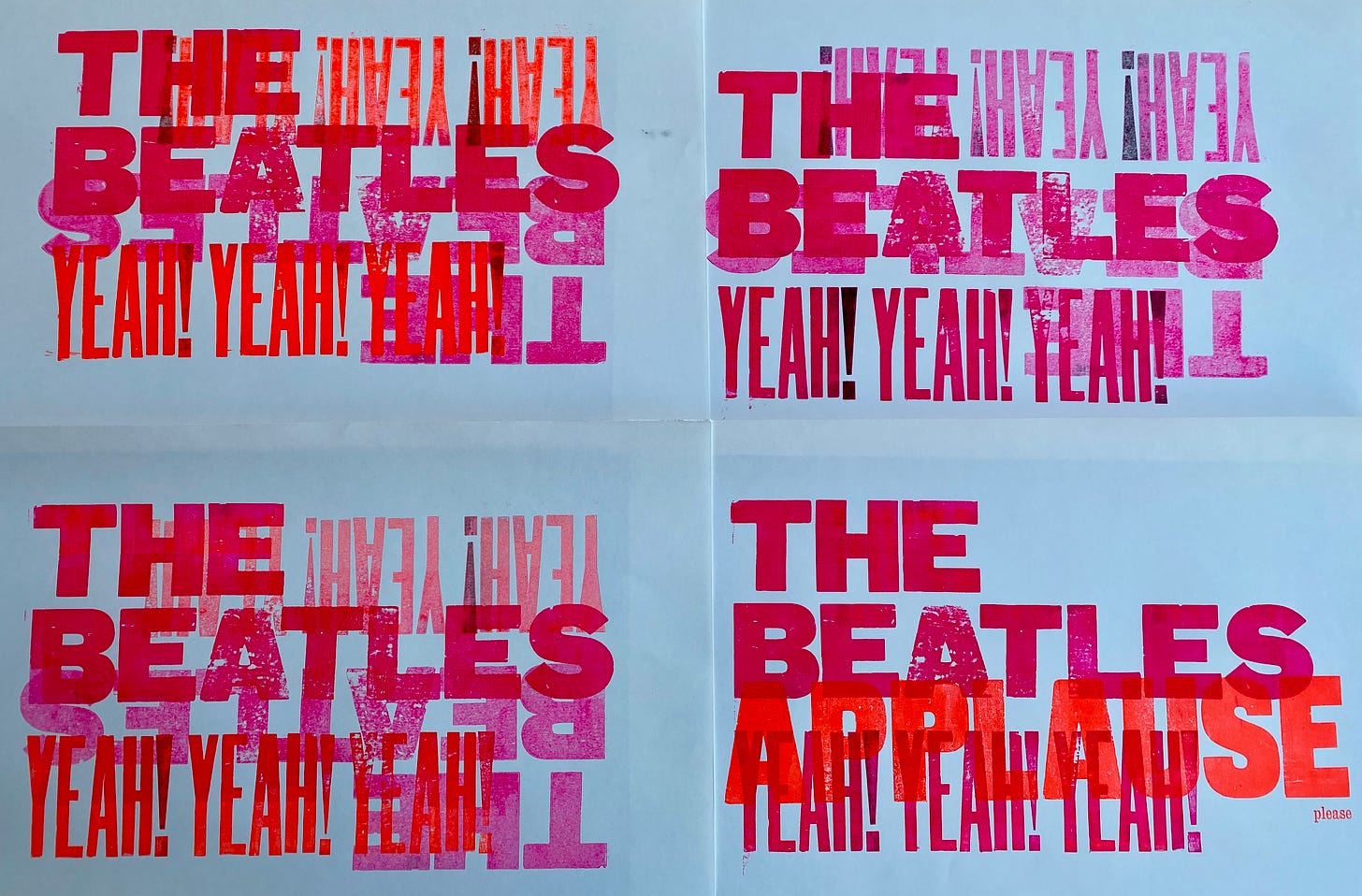
You have reminded me of an awkward breakfast table scene at home when my father looked over the top of the Barnet Press and informed me that my boyfriend had somehow been caught and fined for siphoning petrol out of his mother's car.
Great reading, as always. We lived in Dorset but my Daddy commuted to London daily and brought home the Telegraph (despite being a lifelong Labour voter) as Mummie liked the crossword. He folded and unfolded it carefully in order to read such an unwieldy broadsheet on a busy train so that it was still pristine when he got home. We then took it to pieces to save bits we wanted. We had The Observer on a Sunday for balance and I spent many a happy hour clipping from the supplement for scrapbooks. Living in London, I love finding discarded newspapers in non-Roman script, which are ironed and used as talking point wrapping paper. I miss the hard copy Evening Standard, alas no more as the crosswords and sudoku whiled away a long commute. We still have the morning Metro though. We too were a Diana household, and also Bunty and Debbie which were in newsprint than glossy paper and I actually preferred this format. When I picked up my Bunty from the newsagent, Mr Dewey always searched to see what The Four Marys were up to before he gave it to me!